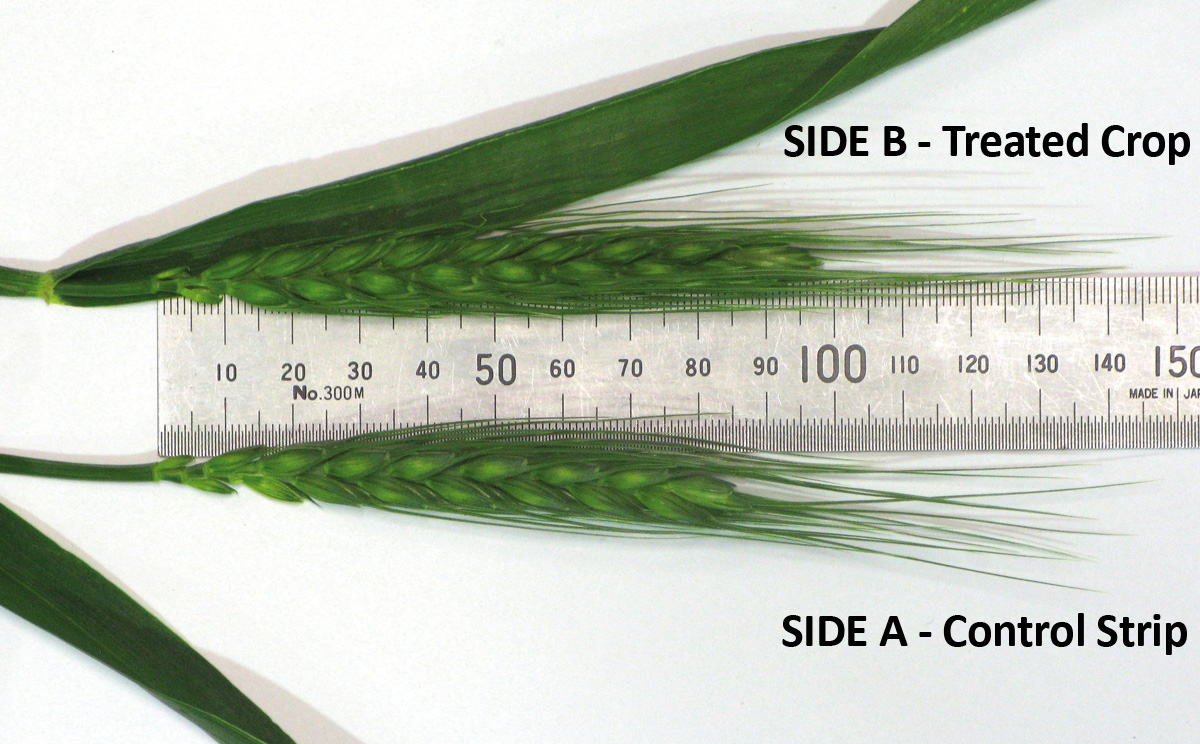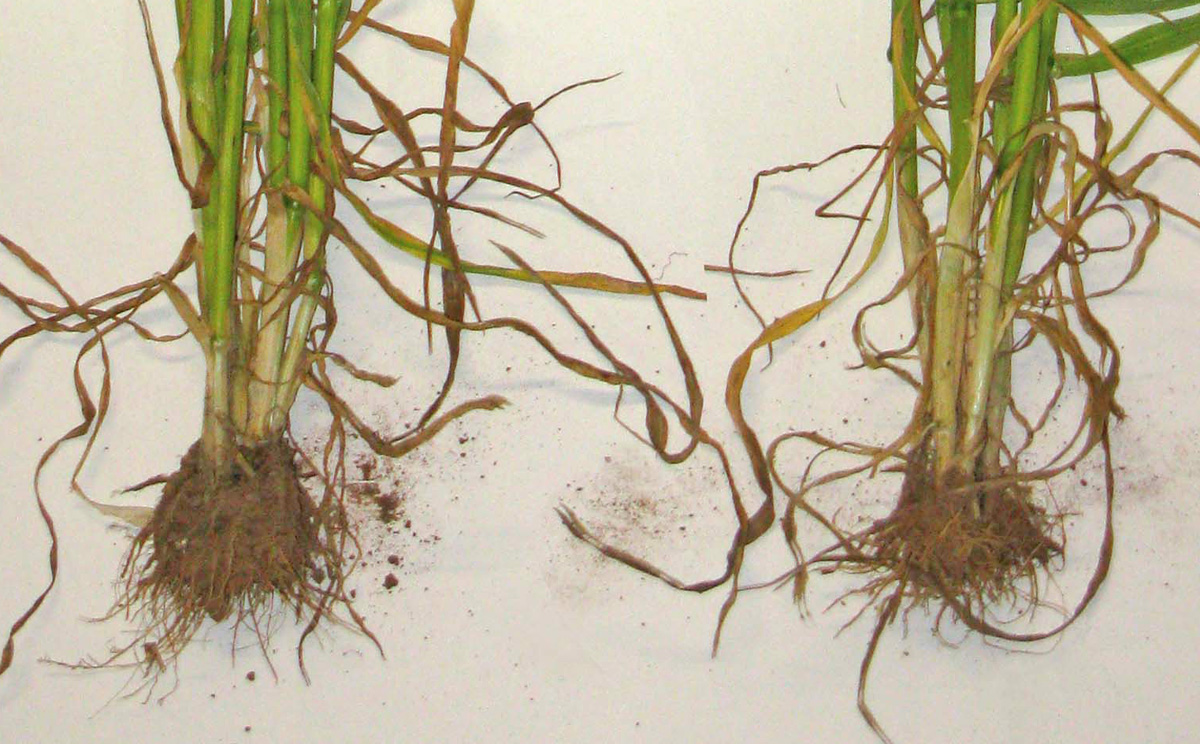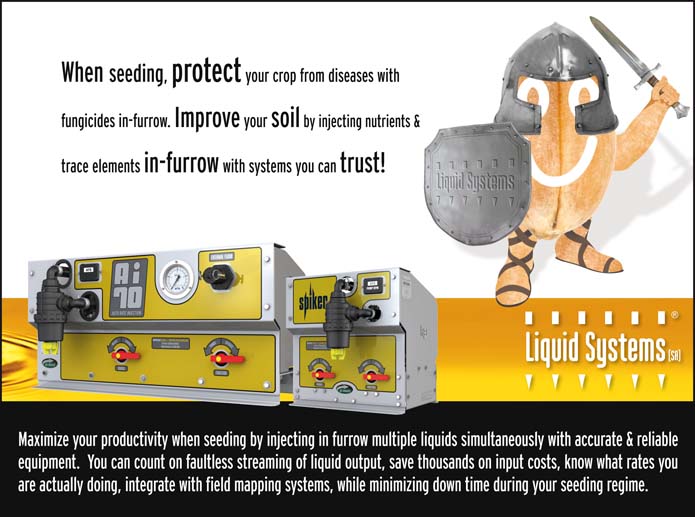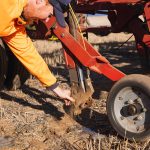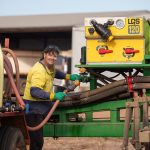Lush farm see results
UPDATE: Lush Farms have completed their harvest and the results from their testing are impressive.
Download this story and others (pdf)
Prior to sowing, Lush Farms spread chicken manure. They sowed Mace Wheat with a granular starter fertiliser but also treated their crop by injecting in-furrow:
- a premium blend of zinc, copper and manganese at 8L/Ha (90c/litre)
- 250g/L Flutriafol at 400mL/Ha ($10/litre)
The trace elements were tank mixed with water and applied using a Liquid Systems 2010 TBT Rate Control Module with a SPIKER module dosing the output with the Flutriafol. These modules were mounted on their John Deere 1910 Air Cart and with a STACKER Distribution system mounted on their 1890 disc seeder.
Data was collected to compare Test Weight and Screenings against an untreated control strip. The results show a significant productivity advantage in the treated crop.
| Treated Crop | Untreated Control Strip | |
| Test Weight | 81 kg/Hl | 78 kg/Hl |
| Screenings | 1.5% | 3% |
As a result of the plumper grain, protein was slightly lower in the treated crop (without downgrading). This will be compensated for this year by applying additional nitrogen towards the end of the growing season.
The in-furrow Flutriafol gave around 16 weeks protection against stripe rust.
Paul Lush is extremely happy with the results. “We have soil that’s low in trace elements and the plant is taking up all the nutrients we are putting out.” He said. “We have had to change the way we farm but we are heading down the right track without a doubt.”
This year Lush Farms will be increasing the size of their control plot to get a better picture of the benefits of their new practices. The flexibility of the Liquid Systems setup will allow them to customise the fertiliser, micronutrient and fungicide mix based on crop requirements and soil testing results.
This is a prime example of how Liquid Systems (SA) equipment can be used to cost effectively provide prescription farming even without the use of nitrogen or phosphorous based liquid fertilisers.
PART 1:
SA Farmer’s Experience
30 September 2011
Early September we were invited to visit Paul Lush, of Mallala, SA. Paul is very pleased with the results of furrow injecting fungicides, trace elements and inoculants. Paul purchased a Liquid Systems (SA) TBT 2010 Module, with SPIKER variable injection and STACKER Distribution system prior to 2011 seeding.
First we were greeted by John Lush (father), who quickly said “We have paid for our Seeder costs in one season!” As in years previous, they spread chicken manure, but this year they had the ability to apply trace elements, fungicides and inoculants in-furrow and it’s looking likely that they will have a 10% increase in yield — even with this winter having below average rainfall.
Paul said, “I’m rapt with this set up — you’ll see the difference the minute we start driving around, looking at the crops. I said to someone the other day I can’t wait for seeding time next year as this system is so good to use.”
We were then taken to several of his properties where we were shown a number of crops. First was a field of lentils that were sown with inoculant, using the SPIKER. Paul explained, “we suspend the inoculant in calico bags in the product tank and you can easily see in the crops where it’s been applied” — (they had left control sections so that they could observe the effects of inoculant application).
We were taken to a tillering wheat paddock where Paul had left a control strip where no trace elements or fungicides had been applied. The picture shows (side ‘A’) where no liquids had been applied and (side ‘B’) where trace elements and fungicides had been applied. Paul explained that side ‘A’ “looks fluffier and is coming to head quicker, showing stress”. The wheat on side ‘B’ “is stronger, has a better root system, better leaves, thicker stems, larger heads — better everything!”
“The spikelets bear from 1-5 flowers (florets). In a good year you’ll get 5 flowers wide in a spikelet and in a poor year only 2 flowers wide per spikelet.”
He informed us that he was getting 8-10 spikelets per head and 4 florets wide — with only 6 inches of rain.
Compare the Results:
CONTROL STRIP (side A)
- no trace elements
- no fungicides
- head average 7-8 spikelets
- quicker to head-understress
- weaker roots
- stripe rust has appeared
TREATED CROP (side B)
- trace elements applied
- fungicides applied
- head average 8-10 spikelets
- better leaves, thicker stems
- 50% better root matter
- no stripe rust
Get a Quote
"*" indicates required fields


